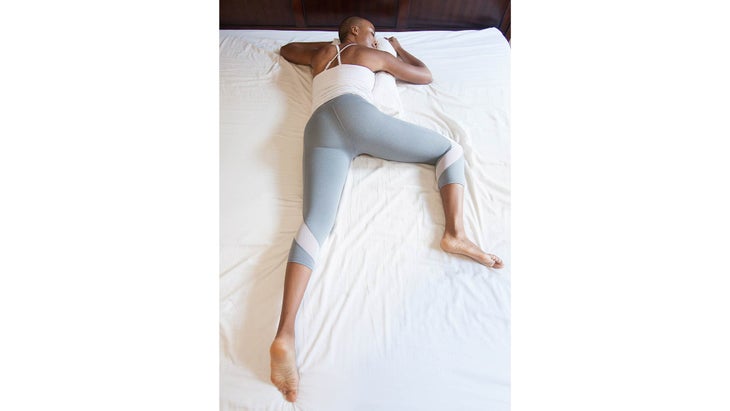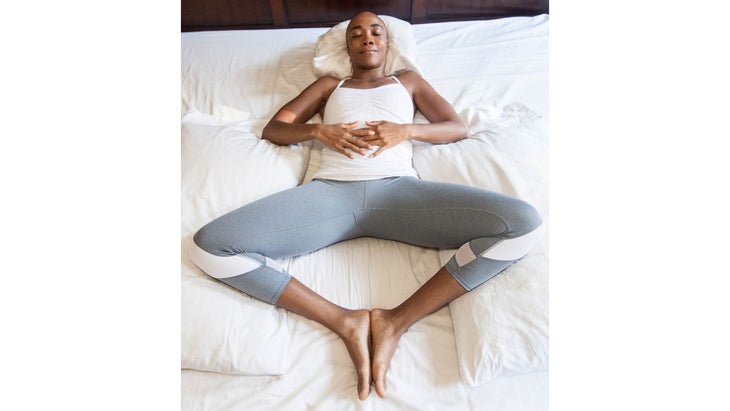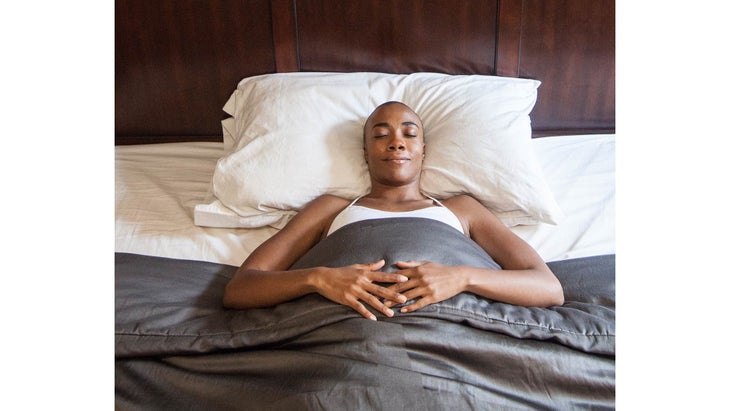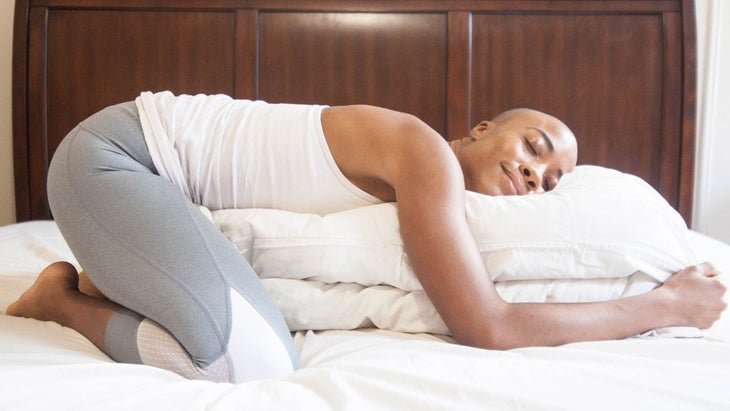“], “filter”: { “nextExceptions”: “img, blockquote, div”, “nextContainsExceptions”: “img, blockquote, a.btn, a.o-button”} }”>
At the end of a busy day, it’s hard to get your body and mind to slow down. Maybe you check your email or scroll through social media and fall down the rabbit hole. Before you know it, it’s midnight. By then, the blue light from your electronics has thrown off your circadian rhythm—the body’s biological clock that regulates the 24-hour cycle of each day—and you can no longer fall asleep properly.
According to Ayurveda, the hours between 10 pm and 2 am are governed by the Pitta dosha, which allows you to digest everything you’ve taken in during the day—from food to information to interactions. Pitta helps to restore all major systems of our body; it affects your heart rate, blood pressure, and metabolism. When you skip sleep during this precious 4-hour window, you miss a vital opportunity for healing and renewal. A good night’s rest affects how you relate to the world. It can help decrease depression and anxiety. Sleep also increases stress resilience, optimism, memory, and even our ability to problem solve.
A helpful first step in shifting your relationship with sleep is turning off your phone an hour before bed and (this might be a stretch) getting under the covers before 11 p.m. If rest does not come easy you need support to wind down, try this restorative sequence that you can do under the covers. You’ll need two or three pillows and lots of slow, deep breaths. Try just one or all of the asanas. May your dreams be sweet and your sleep refreshingly deep!
Balasana (Child’s Pose)
Rest your chest and belly on one or two (or more!) stacked pillows with knees wide apart and big toes touching. Rest an ear on the pillow, close your eyes, and relax your jaw and belly. Your arms can rest on the sides of the pillow or underneath. Focus your attention on the sensation of breath flowing in and out.

Ardha Bhekasana (Supported Half Frog Pose) variation
For this version of Ardha Bhekasana, lie on your belly, with pillows under your head and torso if you choose. Extend one leg out to the side and bend it to a 90-degree angle with your knee level with your hip. Extend the opposite leg straight behind you. Turn your head in the direction of your bent leg and rest it on the mattress or pillow. Relax your belly, your eyes, and your jaw. Focus your attention on the sensation of breath flowing in and out. Rest this way for several minutes, then switch sides.

Supta Baddha Konasana (Reclining Bound Angle Pose)
Lie flat on your back. Bend your legs, let your knees open out to each side, and bring the soles of your feet together. Place a pillow under each thigh; put one behind your head, if you choose. Fold the pillows or add more of them if needed for more support. Place your hands on your belly. With your eyes closed and jaw relaxed, bring your awareness to where your hands make contact with your body. Focus on feeling the rise and fall of your torso with each slow, deep breath in and out.

Pawanmuktasana (Wind-Relieving Pose)
Lie flat on your back; place a pillow behind your head if you choose. Straighten and extend one leg long. Bend the other leg and draw it toward your body, interlacing your fingers around your shin or behind your knee. Hug that leg in toward your side body as if your knee could touch your armpit. With closed eyes and a relaxed jaw, breathe into your belly. Stay for as long as you’d like and then switch sides.

Supported Reclining Twist
Lie flat on your back. Bend both legs at a 90-degree angle and let them fall to the side. Stack your knees and hips, and slide one or two pillows between your thighs. Extend your arms straight out at shoulder level and turn your head in the opposite direction from your knees.. Close your eyes and relax your jaw and belly. Focus on feeling the breath flow all the way up, and imagine it is spreading into your collarbones and out in the direction of your arms. Stay for as long as you’d like and then switch sides.

Savasana (Corpse Pose)
Lie down on your back and allow your body to rest with your hands by your sides or on your stomach. You can place pillows under your upper thighs or behind knees for more support if desired. With eyes closed and your jaw relaxed, feel your breath filling up your belly, expanding your ribs, and flowing up into the chest on an inhalation. Exhale by relaxing your chest, ribs, then belly. This breath is called Dirgha pranayama (Complete Breath). Allow this wave-like rhythm to lull you to sleep.
This article has been updated. Originally published November 27, 2017.
See also: 5 Morning Stretches That You Can Do From Bed
About our contributor
Sara Clark is a yoga and meditation teacher based in Grenada. Find more about her at saraclarkyoga.com or on Instagram @saraclarkyoga.

